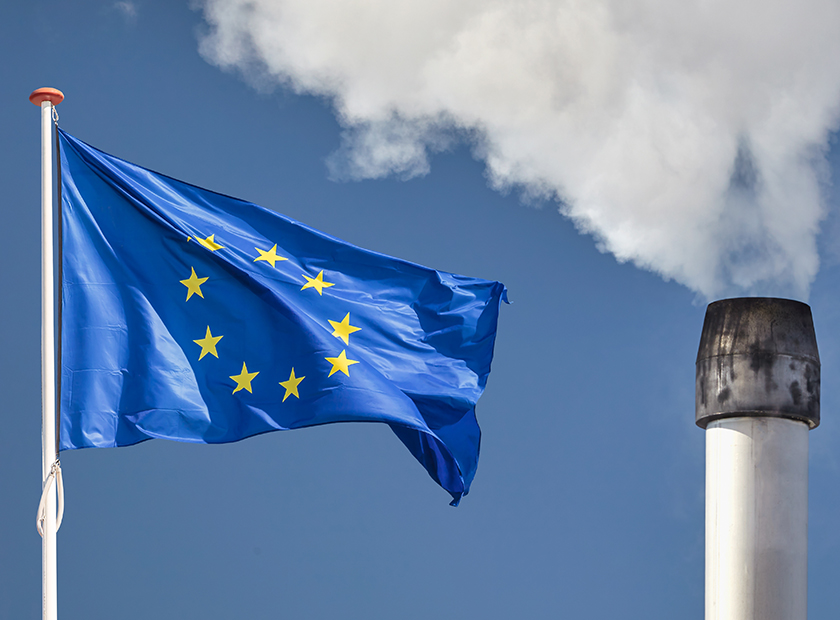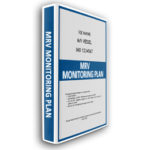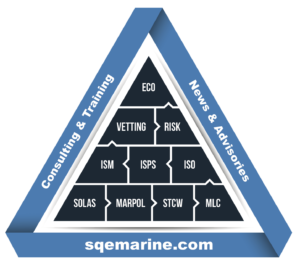Overview
In 2015, the decarbonisation of the maritime transport sector in the EU took an important first step forward with the entry into force of Regulation (EU) No 2015/757 on the Monitoring, Reporting and Verification of CO2 emissions (the MRV Regulation).
The MRV Regulation established rules where shipping companies report annually, and accredited independent verifiers verify the reported amounts of carbon dioxide (CO2) emissions and other relevant information from large ships (more than 5,000 gross tonnage, or GT) calling at EEA ports.
In 2023, as part of the package of measures to reduce emissions from the maritime transport sector, the MRV Regulation was amended.
EU-ETS
The EU-ETS is the EU Emissions Trading System (ETS) and has been covering the energy-intensive sectors such as power generation, steel works, cement production and oil refineries since its launch in 2005. The aviation sector was incorporated in 2012, and its extension to the shipping sector is planned in January 2024.
The EU-ETS works on the cap-and-trade system, which is to (1) allocate allowances on the total amount of greenhouse gases (GHG) emissions that can be emitted by each operator or installation (cap), and to (2) let them buy and sell their allowances in case of surplus or shortage (trade). Such operators who exceed their allocated allowances must purchase the allowances from the designated markets or other operators. As cap levels are set to be gradually stringent, the efficient emissions reduction through the market principle is expected among the participants as a whole.
In order to support above requirement, the Regulation (EU) No 2015/757 was amended on late May 2023 and the Regulation 2023/957 of the European Parliament and of the Council amended the previous in order to provide for the inclusion of maritime transport activities in the EU-ETS and for the monitoring, reporting and verification of emissions of additional greenhouse gases and emissions from additional ship types.
Main changes
-
Shipping companies are responsible for the compliance with the EU-ETS for shipping
-
Greenhouse gases (GHG) included in the reporting:
-
Until 2025: Carbon dioxide (CO2) only
-
From 2026: Carbon dioxide (CO2) + methane (CH4) + nitrous oxide (N2O)
-
-
Ships of 5,000 GT and above, arriving at or departing from EU/EEA ports are in the scope of the EU-ETS for shipping, which is the same scope as the EU-MRV regulations. However, under the revised EU MRV regulation from 1 January 2025, general cargo ships between 400 and 5,000 gross tonnage and offshore ships of 400 gross tonnage and above fall under the scope.
Actions required
From 1 January 2024, shipping companies should revise the monitoring plan of each of their ships to be in conformity with the requirements of the amended MRV Regulation. Revised monitoring plans must first be assessed by an independent accredited verifier.
If the assessment shows that the plan is in conformity, companies must then submit the revised plan in THETIS-MRV no later than 1 April 2024, for approval by the responsible administering authority.
If a ship calls to a port in the EEA for the first time after 1 January 2024, the company should submit its monitoring plan not later than three months after this first call.
From 1 January 2024, shipping companies must monitor and report methane (CH4) and nitrous oxide (N2O) emissions, as well as CO2 emissions.
From 2025, by 31 March of each year, companies must submit an emissions report for each ship under their responsibility, for the entire reporting period of the previous year, which has been verified as satisfactory by a verifier in accordance with Article 13 of the MRV Regulation. The emissions report must be submitted through THETIS-MRV to:
- The relevant administering authority
- The authorities of the ship’s flag State (if it is flying the flag of an EEA country)
- The European Commission
How we may help
SQEMARINE can provide guidance on the revision of EU MRVs in order to support the amended Regulation.



